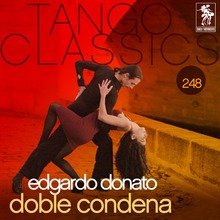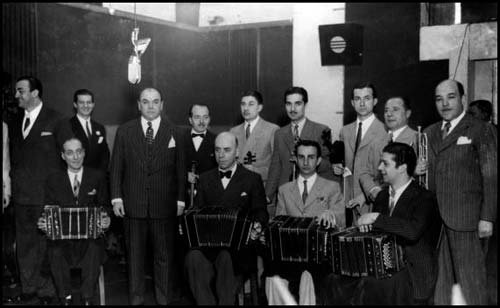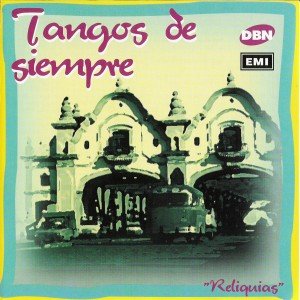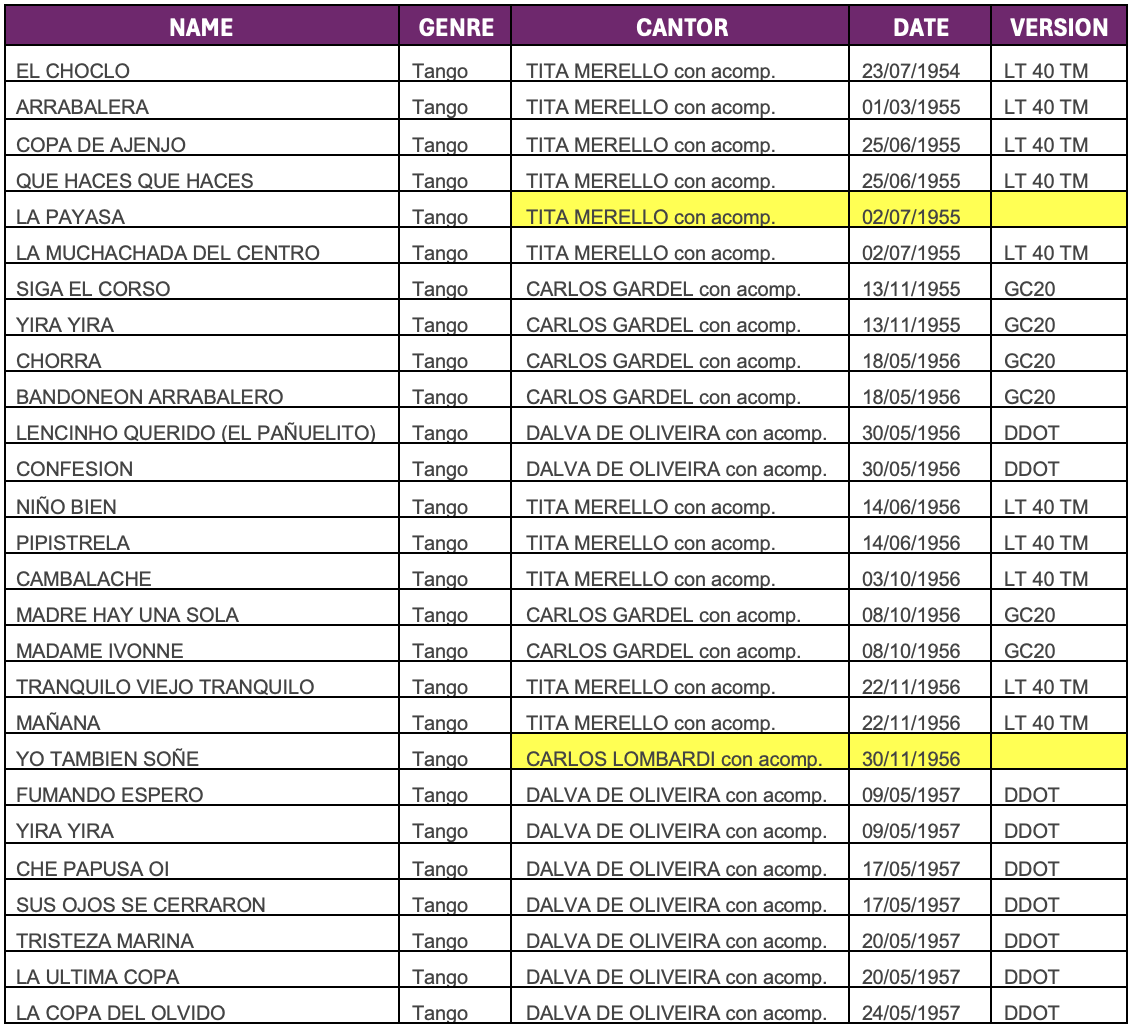9a) Edgardo Donato in the Post-78rpm Era
In the mid-1940s, due to various factors, numerous renowned EdO orquestas gradually halted their recording activities. However, the 1950s witnessed a resurgence of these bands as significant advancements in recording technology enticed them back into the studio. Their goal was to create a clearer and more truthful representation of their musical artistry. Among those who made a return were luminaries like Julio De Caro, Lucio Demare, Pedro Laurenz, and Angel D’Agostino, to name just a few.
Edgardo Donato’s orquesta, with the musical style characterized as "hopscotch" (in contrast to the merry-go-round Alfredo De Angelis), is known for its simplicity, lightheartedness, and dance-focused features. Donato's musical empire faced its biggest setback in 1943, a consequence of a series of romantic and impulsive escapades.
In 1950, Edgardo Donato signed with Pampa, a sub-label of Odeón, marking a pivotal moment in his career path. During this period, his music exhibited a transformative shift from its earlier childlike spirit to a more mature and pondering expression, coinciding with a time when the tango genre was starting to wear grey.
Donato’s last recording session happened in 1961 in RCA’s studio. He recorded his favorite four pieces.
Regrettably, a significant portion of Donato's recordings from the post-78 era remains inadequately transferred and elusive to find. This scarcity contributes to its quasi-extinction in milongas across the globe, which is indeed a lamentable loss overall.
Must-haves (5 discs):
EU 19017: Edgardo Donato - En La Década del “50”
Best quality available 1953+.
RGS 1640: Edgardo Donato
Provided some good shellac transfers.
EMI DBN: Orquestas Olvidadas Vol.1-3
Best quality available. The three albums are also important collectors’ items.
Could-haves:
AMP 1280: Se Va La Vida Vol.6 Edgardo Donato
Provided some shellac solutions.
TangoTunes: Edgardo Donato 1929-1956
Provided some shellac solutions.
100 Años en 100 Tangos (CACT):
Only one track needed: El Huracán version 1961.
Angel Records: EETP
Only one track useful: El Huracán 1952 version.
Danza y Movimiento: Vol. 245-248: A lot of shellac transfers of acceptable quality.
The Comparison Lists
PS: Items in yellow are yet officially digitalized, and are only available in shellacs or possible LPs.
Tango Instrumental 1950-57
Vocals 1950-52, Carlos Almada and more
Vocals 1953+ (1961 in Víctor)
Milonga and Vals
9b) Francisco Canaro and his Orquesta in the Post-78rpm Era
Francisco Canaro is arguably the most commercially successful and unbelievably active tango artist of all time, with an extremely long career spanning more than 60 years, dating back to the primitive age of tango in the 1900s until the 1960s. He is a lifelong Odeón artist and has left a vast legacy of tango recordings, totaling nearly 4,000 tunes. One can take a glimpse of Christoph Lanner’s Canaro Discography and get a general idea.
Canaro toured Japan in 1961, being one of the highest-ranked tango musicians ever to visit the country, and even left several recordings in the Toshiba studio. He had a tremendous influence on the development of tango in Japan - this also made the Japanese enthusiastic about Canaro’s musical legacy.
Francisco Canaro is also a pioneer of new music genres, including the very first milonga ciudadana, “Milonga Sentimental,” recorded in 1932. In this article, we only aim at the major three genres (TVM)."
Although Canaro has long passed his prime in the post-78 era, he kept recording in huge quantities after 1950, and some are still of the highest artistic value. Approximately 25% of these recordings have yet to be digitalized.
Must Have: (8 items)
DBN Canta Alberto Arenas (DBN AA)
All about Alberto Arenas.
DBN Instrumentales para Bailar (DBN IPB)
The vigorous instrumentals.
DBN Milongueando con Canaro (DBN MCC)
Some milongas
DBN Te Acordás, Hermano? (DBN TAH)
An important selection of Canaro’s late hits.
EM FATW Canaro
Also the instrumentals.
Toshiba Historia de Francisco Canaro 8CD (THFC)
Probably the most important and precious set for Canaro collectors. Many tracks are impossible to find elsewhere.
EM Las 1001 50CD
Contains some hard-to-find tracks
DL 3005 su Orquesta Tipica 1950-1957
Some beautiful Alonso tracks.
Could Haves:
Six albums (DBN TSiempre Vol.1-3, DBN Encuentro, DBN DBN Los Grandes Tangos del 40, EM Evocando el 40) that respectively contains their unique tracks.
Three albums (DDOT, GC 20, LT 40 TM) for the fans of Dalva De Oliveira and Tita Merello. Kindly note that the Carlos Gardel tracks are a sound technology stunt, with his voice dubbed to Canaro’s instrumental accompaniments.
Four Albums (EETP, MG ON, RM 063 and RM 164) with their unique tracks.
The Lists
PS: Items in yellow are yet officially digitalized, and are only available in shellacs or possible LPs.
Tango Instrumental (1949-1964)
Alberto Arenas 1949-56
Mario Alonso (1949-54)
Juan Carlos Rolon y Guillermo Rico (1955-59)
Vocals 1958-63
Vocal Accompaniments (1954-1957)
Vals and Milonga (1949-61)



















































